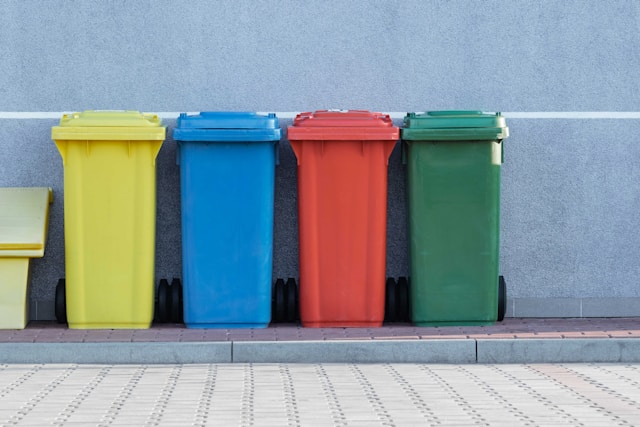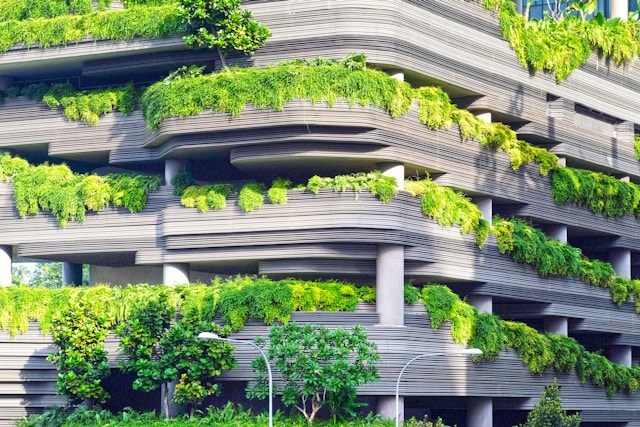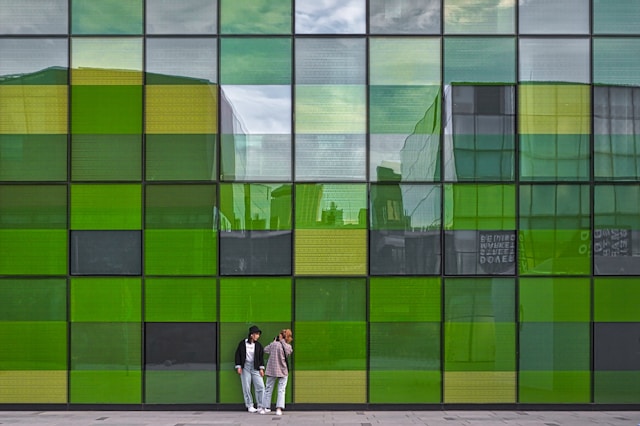
During the past few years, environmental concerns have taken front stage in the UK’s construction market. This is a reflection of a generalised trend towards sustainability, which affects both residential and commercial existing space, including offices, as well as planned new builds. This trend mirrors the requirements and expectations of eco-conscious tenants and office occupiers, who are increasingly committed to sustainable workspace initiatives.
In this blog post, we explore the different ways in which office spaces in London are adopting eco-friendly and sustainable ventures, putting green innovation at the heart of the workplace.
6 Ways London Offices are Embracing Sustainable Practices
1. Renewable energy
The adoption of green energy sources in business settings is not a new practice, but it has been gaining popularity over the years. It’s estimated that 60% of developers now approve of this measure.
To implement renewable energy sourcing in offices, some developers have incorporated green energy systems into their buildings, as is the case of The Crystal in Royal Victoria Dock, a state-of-the-art conference centre that also features office space. This is one of the few office spaces in the city that doesn’t burn any fossil fuel to meet its energy consumption needs, thanks to an extensive photovoltaic system that covers more than 1,500 square metres.
A similar example is Knotel’s Hatfield, which draws 100% of its electricity from renewable energy sources. Moreover, the Southwark office building covers 90% of its hot water requirements from on-site solar panels.
On-site green energy generation isn’t the only option. For example, flexible space operator Workspace recently signed a 10-year deal with a solar farm in Devon, to cover 2/3 of the total electricity requirements in more than 70 sustainable workspaces spread across London and the south of England.

2. Smart heating and cooling systems
Smart HVAC systems are capable of optimising temperature settings based on occupancy, weather conditions, and other factors, using real-time data and smart monitoring technology, including IoT and machine learning. In commercial buildings, these systems can reduce energy use by anything between 20% and 40% while improving indoor air quality.
Bishopsgate 22, one of the tallest buildings in London, is an example of successful implementation. This office building boasts some of the top smart building standards in Europe. Its smart HVAC system can provide a comfortable office environment to 12,000 workers, since it’s integrated into a smart building management platform that can automatically adjust cooling output based on the building’s current heat load at any given time.
3. Recycling and upcycling
Recycling and upcycling are some of the most fundamental concepts in sustainability. These practices have a wide range of applications in office buildings, from waste reduction and introducing natural elements to construction, design, and décor.
For example, the collaborative office at Creative Works has been listed as one of the top 10 most sustainable workspaces in the city. These Walthamstow offices have been refurbished making extensive use of locally sourced sustainable materials. More than 80% of the furniture in its sustainable workspaces is made from reclaimed wood, and the company in charge of the renovation is an award-winning circular economy supporter.
For a large-scale upcycling project, there’s no better example than Containerville, which offers state-of-the-art and eco-friendly office space in upcycled shipping containers, which are ideal for companies looking to stay green throughout their growth journey.

4. Minimising waste
According to data on office waste management, the average UK office worker generates 2 kg of solid waste every day, not counting paper and cardboard waste. To reduce waste generation and minimise its impact on the environment, some London offices are implementing comprehensive recycling programs and initiatives to minimise single-use plastics.
An example of this is the Walkie-Talkie building, located at 20 Fenchurch Street. This pioneering building has achieved an Excellent BREEAM rating thanks to its wide-ranging sustainability profile. More than 96% of the building’s construction waste is diverted, and from timber pallets to packaging or excavated materials, they all found a second life away from landfill.
5. Energy-efficient lighting
A Deloitte study found that a significant percentage of London offices fall short of the Minimum Energy Efficiency Standards. Energy ratings can be improved by upgrading to energy-efficient lighting solutions, including LED lighting and smart lighting controls, sensors, or circadian lighting.
An example of an office building that has already embraced these green lighting solutions is Fetter Yard, located in the heart of Holborn. By replacing standard fluorescent tubes with LED lighting, they didn’t only gain visual appeal, but they were also able to reduce their lighting consumption by 70%.

6. Water conservation
Rainwater harvesting systems and water-efficient fixtures can help reduce a building’s environmental impact. A well-known example is the Bloomberg headquarters located in the City. This sustainable workspace achieved an impressive 98.5% BREEAM score for its innovative approach to sustainable building management systems, among which it’s worth highlighting their water conservation strategy.
The building has its own water treatment plant, which is capable of reusing rainwater and grey water to then feed vacuum-flush toilets and reduce mains water usage even more. In doing so, the building saves 25 million litres of water each year and its water usage is 70% lower than the average office building.
Another good example is The Shard, one of the city’s most iconic office buildings. The building features a seven-tank rainwater harvesting system with a total capacity of nearly 300,000 litres, which significantly reduces the demand on mains water across its 53 floors.

Conclusion
As we have seen from these examples of sustainable ventures in Central London offices, environmentally friendly practices are helping create sustainable workspaces across the City. The most sustainable office spaces in London are more than just places for work; they are future-forward environments that prioritise well-being, comfort, and even cost-effectiveness in their chase for environmental responsibility, reducing their impact on the planet.
Looking for a sustainable workspace in London?
After physical or virtual office space in Central London? Or maybe you’re wanting a Greater London borough location? We have a variety of choices for serviced offices and workspaces across The Capital. Call us on 020 3965 9617 to speak with a member of our friendly team of professionals. Our office space experts will help you and your business locate the perfect office in London to fit your individual requirements.
For further reading, below are some of our best recent articles on workspace and the workplace:
Mastering the Art of the Office Seating Plan
Comparing Office Space Cost: Central London vs Outer London
Prime Locations for Office Space, Central London
Harnessing Clean Technology: Five Strategies for Energy-Efficient Office Spaces
Shining a Light on How Office Lighting Fuels Employee Creativity
Types of Commercial Leases in the UK: What You Need to Know
Wellness in Office Design: Gearing Offices for the Wellness Generation
Hot Desking & Renting a Virtual Office in London
